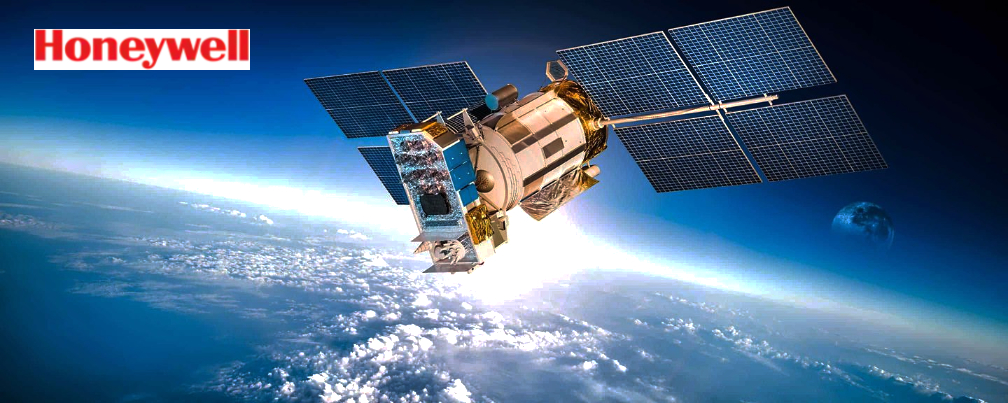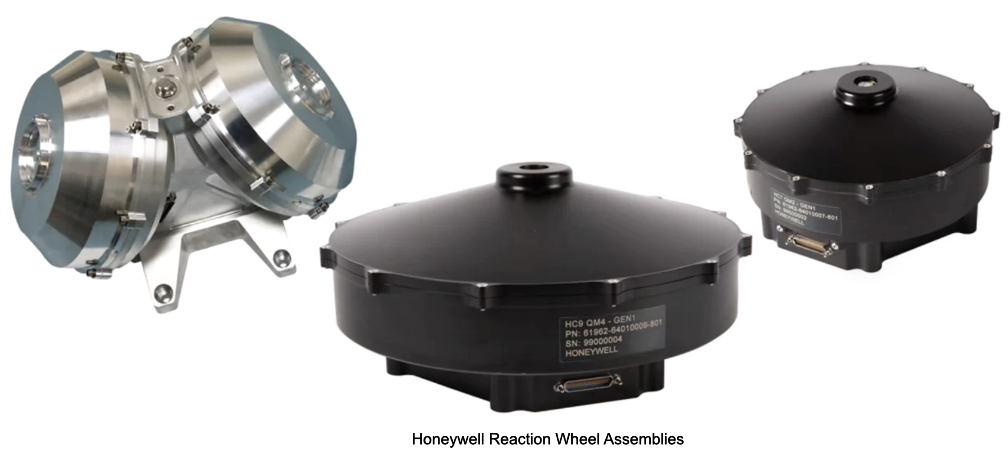
Honeywell (NASDAQ: HON) has ramped up their commitment to the rapidly growing smallsat market segment by adding three new products to their lineup of space offerings.
The newest additions include Honeywell’s X Band Downlink Transmitter and Optical Communication Terminal (OCT), which enable high-bandwidth data to be transmitted both down to Earth and between satellites. Additionally, Honeywell is debuting a new line of Commercial Series reaction wheel assemblies specifically designed for commercial space satellites.

All three of these new products are intended to serve the small commercial satellite market segment, which has cost and production volume requirements different than traditional space programs. Instead of producing only one satellite that must function for years or decades, these satellites are smaller, have a shorter lifespan, and are often part of a large constellation network composed of dozens or hundreds of satellites.
Though they can perform a variety of tasks, two common uses for satellites are to capture images of Earth and to enable connectivity, or internet service. Honeywell’s new X Band Downlink Transmitter and OCT are designed to handle large amounts of data being transmitted from and between satellites.
Honeywell’s X Band product has been selected by LeoStella for integration on the first three satellites of a constellation that will provide Space Situational Awareness (SSA) services, which will deliver essential information to help operators navigate their satellites safely and manage global “space traffic” on-orbit.

Although both products transmit data, they serve different purposes. Honeywell’s X Band Downlink Transmitter is intended for satellites that transmit information back to the ground. The OCT is similar, but it can handle data rates 10 to 100 times higher than X Band, allowing data to not only be transmitted to the ground but also between satellites in a constellation. This makes it an ideal solution to enable high-speed internet or to connect military satellites in a meshed network with maximum flexibility and speed.
Honeywell is currently accepting orders for its X Band Downlink Transmitter and OCT, with the production release anticipated toward the end of 2021.
Building upon decades of experience developing reaction wheel assemblies (RWAs), Honeywell has launched a new line known as the Honeywell Commercial (HC) Series RWAs. The series consists of the HC7 and HC9 reaction wheels, so named because they are roughly seven and nine inches in diameter. These reaction wheels are designed specifically for smallsats, meaning they have a shorter lifespan and are significantly lower in cost, while still maintaining the high levels of performance.

Reaction wheels are a type of flywheel used primarily to control the attitude of spacecraft or satellites. They use electric motors, which spin the wheels to tilt or point spacecraft using momentum. Essentially, they keep spacecraft still, making them a good option for communications satellites that point at fixed targets on the ground. Honeywell’s Commercial Series reaction wheels completed qualification in Q2 of 2021 with first deliveries anticipated in Q4, and eventual launch into space expected in late 2022.
Today, Honeywell products can be found on more than 1,000 satellites, delivering mission success.
“Think of data like water and our products as the pipeline that carries the water. As image quality and internet speeds increase, the amount of data being sent increases as well,” said Mark Covelli, senior director, Space Strategic Marketing and Sales, Honeywell Aerospace. “Our customers’ satellites need to be equipped with wider ‘pipelines’ to handle the larger amounts of data. These products are specifically designed to meet that need, and our X Band product will help LeoStella’s satellites meet its mission requirements.
“The companies launching and operating small satellites have significantly different requirements than your traditional years- or decades-long space programs. These satellites are orbiting closer to Earth, they’re much smaller, there are significantly more of them and simply put, they don’t need to last for years or decades,” Covelli added. “Honeywell saw a gap in this segment and is now using our expertise in reaction wheels to create a new family of products that meets the needs of customers operating in this new environment.“
